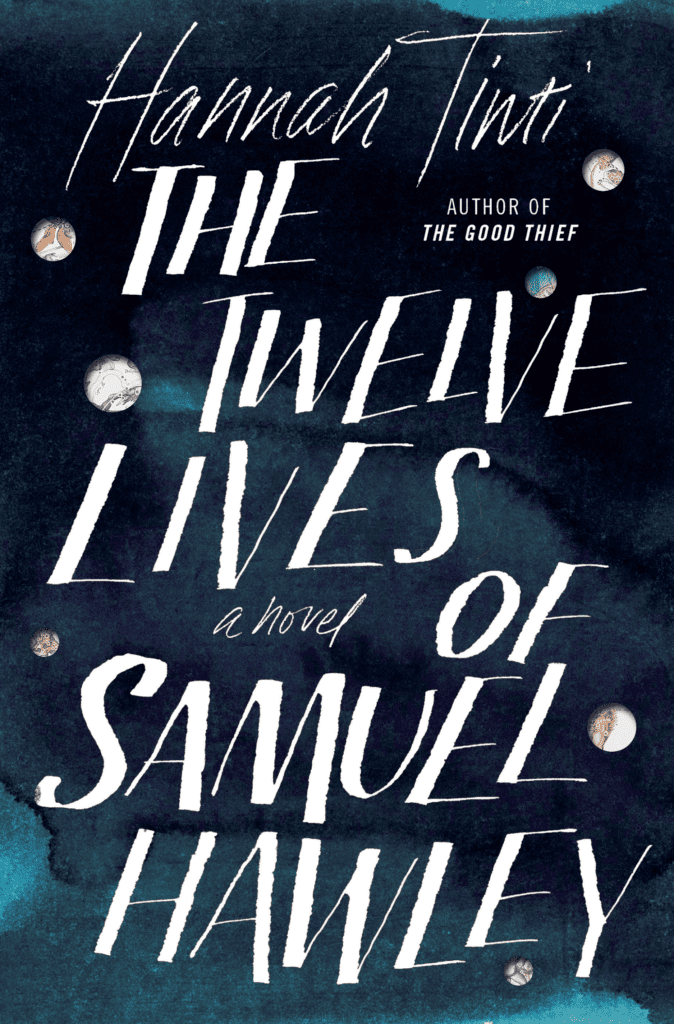Hannah Tinti’s new book, a coming-of-age tale called The Twelve Lives of Samuel Hawley, follows the life of titular character, both in the present—as a widower raising his daughter in wife’s hometown—and the past, as a loner on the run. With daughter, Loo, in tow, Hawley brings her to Massachusetts where the secrets of his past are brought to light.
The twelve scars on Hawley’s body are from bullet wounds, and within each of those wounds is a memory, a place in time from his past that mark the trajectory of his life. As Loo uncovers these stories, she gets closer to the secrets of her parents’ past, revealing a dark history that overlaps into her present.
Tinti’s 2009 novel, The Good Thief, was a New York Times Notable Book of the Year and winner of, among other prizes, the American Library Association’s Alex Award. It was also optioned for a movie adaptation.
In August, we talked about how the book came into being, the formation of its characters, and how twelve scars and the celestial heavens help give this book structure and heft.
***
The Rumpus: How did Twelve Lives of Samuel Hawley unfold for you, from idea to writing? How long was it brewing for you before you started to write it?
Hannah Tinti: Not long. I had a vague idea of writing a love story, and I sketched out a scene that included the greasy pole—which is a real contest that takes place each year in Gloucester, Massachusetts. A forty-five foot pole is set horizontally over the water from a town pier. The pole is covered with grease and lard. A flag is nailed to the end. The first fisherman who manages to make it to the end of the pole, and capture the flag, wins.
As I described the town and the men lining up for their turn, I focused on one fellow taking off his shirt. I brought my binoculars right up to his skin, and saw that it was covered with scars—bullet holes, healed over. It made me think of all the ways our physical bodies become maps of the past, and I wondered if it might be possible to skip through time, from when this man was a teenager until he was in his fifties, and tell his story that way—splitting his life into slivers, with massive blank spaces in-between, that the reader would have to imagine. That man on the pole turned into Samuel Hawley.
Rumpus: When you started writing it, did you know right away that it would be a novel rather than a short story?
Tinti: I knew by the end of that first writing day. Novels have a different heft to them than stories.
Rumpus: How did Loo as a character first appear to you? How did she evolve over time?
Tinti: She was part of the book from the very beginning. Once I’d finished describing Samuel Hawley, and understood that he was a hardened criminal who’d been shot multiple times, I had to come up with a reason for him to still be alive. I searched the crowd and found his daughter, Loo, standing by herself on the shore. She is strong in a different way than her father. While struggling to fit into their new home town, she begins to piece together the mystery of her mother’s death. Her story is one continuous narrative that slowly pulls Hawley’s past into the present.
In many ways this novel is a call and response. Hawley and Loo’s chapters are a conversation about inheritance, coming of age, and the need to understand our parents in order to form our own identities.
Rumpus: Was your own life, growing up in Salem, Massachusetts, an influence on the novel?
Tinti: Olympus (the fictional town in the book) is based on Gloucester, Massachusetts, where I lived for a while after college, waiting tables. Gloucester is about twenty minutes away from Salem, and the beaches there are incredible—rocky shores and ice-cold water. It’s a blue-collar town and very proud of its roots in the fishing industry. Like Loo, I was raised to work hard, and always had a job, starting when I was thirteen. And, like her, I was a bit of a loner and never quite fit in. For that I was bullied. I drew on those experiences to write parts of the book. I only wish I’d had the guts to break those kids’ noses.
Rumpus: What surprised you most about Samuel’s character? Was there any scene with him where you thought, Wait, where did that come from?
Tinti: Nothing surprised me about Samuel Hawley. It was more the elements outside the characters that took interesting turns. Like when the whale showed up in “Bullet #3.” Really?, I thought, a whale? I nearly cut it out of the story. I didn’t think I was a good enough writer to have a whale in my book. I had to imagine that no one would ever read it before I could even begin to try and make it work. But I’m so glad I did. The whale turned into an essential part of the novel. So, my advice? Whenever you think you’re not good enough—try it anyway. Keep the whale.
Rumpus: Did you have any influences that you tended to turn to while writing Twelve Lives?
Tinti: E.L. Doctorow was my thesis advisor and he’s always been a big influence, especially how he handles time. Also, the Brontë sisters. I reread them constantly. But the books I turned to the most while I was writing Twelve Lives were comics and graphic novels. As an editor, I deal with words all day, and sometimes that makes reading for pleasure difficult. I began to read comics to give my eyes a rest, and before long I was hooked, marveling at the art and the emotion on the page. Some of my favorites are Sweet Tooth by Jeff Lemire, Mind MGMT by Matt Kindt, Fullmetal Alchemist by Hiromu Arakawa, American Vampire by Scott Snyder and Rafael Albuquerque, and Saga by Brian K. Vaughan and Fiona Staples. Lately I’ve really been enjoying Monstress by Marjorie Liu and Sana Takeda.
Rumpus: As you were writing Twelve Lives, was there a habit or ritual that you employed as you worked through the novel?
Tinti: I drew pictures nearly every day. Little doodles of monsters, mostly. It’s something I picked up from Lynda Barry. I’d draw a random, squiggly line, and then when I looked at the line I’d imagine where the eyes should be, where the teeth should be. It helped me grow more comfortable with letting my subconscious take the reins.
Rumpus: Do you have a favorite passage from Twelve Lives? Something that, when you wrote it, you realized it really brought an important element of the book together that you hadn’t seen coming?
Tinti: I’ve worked on the book for so long that each page feels like a part of my own skin. But the bruise that still hurts the most is probably the ending of “Bullet #11.” I think that section speaks to the magic and hope you can sometimes find in moments of true despair. To put those lines here would be too much of a spoiler, though. So instead I’ll use a paragraph from earlier, when Loo is showing a friend how to shoot a gun:
She squeezed the trigger. And there was the boom. The sound was so loud it pushed everything out of Loo’s mind—like an eraser wiping all her thoughts clean. For a brief moment she was nothing but a person in a place and there was no past and there was no future, only this single moment where her life flashed open—and she was awake and she was alive and she was real. Then the boom began to fade until it was only an echo, and she was her old self again, the memory of the previous moment nothing but a powdery smell in the air, like a match lit and quickly blown out.
Rumpus: How did the structure, with the use of Samuel’s twelve scars, unfold?
Tinti: I didn’t know how many scars there would be until I connected Samuel Hawley’s story with the myth of Hercules. The tale of Hercules is one of redemption—and I began to weave elements of each of his twelve labors into the novel. There are also twelve signs of the zodiac and twelve numbers on the face of a clock. The number twelve gave me a sturdy structure to shape the book. It also presented an interesting challenge for me as a writer. After the first bullet chapter, the reader knows what’s coming. And I had to shoot Hawley eleven more times.
Rumpus: The celestial heavens struck me as a way that Loo kept a tether to her mother. Can you talk about the intention around this, or was it something that appeared only as you were writing?
Tinti: The constellations began as a way to set up the final chapter, but the deeper I went the more I uncovered. Like the whale, they helped create brief moments of transcendence. The kind that happens as we’re going about our day, worrying about paying bills, and then a car smashes into us, or someone we love dies, or maybe it’s something very, very small—we notice a bee struggling inside a flower, or the smile of a woman as she passes us on the street, and for that tiny fraction of a second we understand what it means to be alive in the world, and then the moment passes, and we start worrying about our bills again.
The stars connect Loo to her mother, but most important, they help her navigate through her father’s violent past. The design of the book plays into that. When you pick up a copy of The Twelve Lives of Samuel Hawley, you’ll notice that it has two covers. The outer sleeve is dark blue, with die-cut holes—representing Samuel Hawley and his bullets. Remove it and you’ll find Loo’s cover underneath—a beautiful, multi-colored map of the constellations. When you layer the covers together, Loo becomes the light shining through her father’s darkness, and together they form a new image, of planets spinning together across the night sky.
***
Author photograph © Honorah Tinti.





